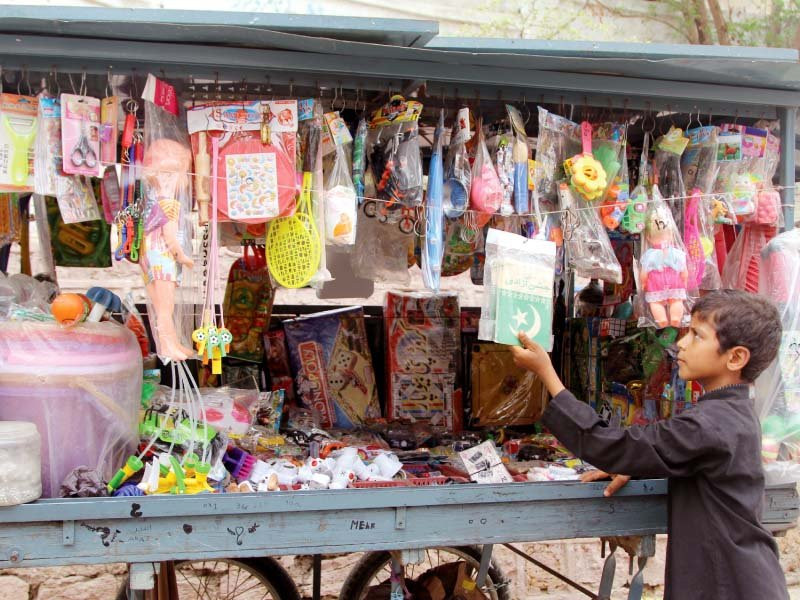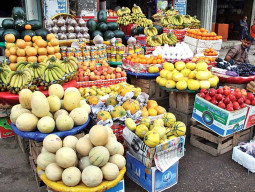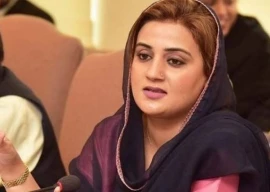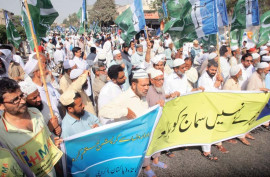
Toys are the greatest source of joy in childhood but unfortunately, they, like other material goods, are affected by economic concepts that children cannot comprehend.
Rising inflation and declining purchasing power have deprived adolescents from poor and lower middle-class families of their favorite playthings. The prices of high-quality battery-powered ones have multiplied over the past few years from a few hundred rupees to thousands of rupees, prompting parents to buy cheaper alternatives for their children.
In the past few years, the global toy industry, whose market ranges from an estimated $80 to 90 billion a year, has introduced many technological innovations in toys. In contrast, playthings in Pakistan are technologically outdated, expensive, and sparsely consumed due to a lack of organized local companies engaging in their production. A few makeshift factories do exist which produce toys under the Rs 100 price tag, but such factories use substandard and hazardous raw material for their products, such as recycled plastic or plastic made from recycled medical waste which is extremely dangerous for the health of children.
Since local production of high-end toys is almost non-existent nearly all types are imported. Last year alone, toys and video games worth $41 million were imported in the country, a great majority of which came from China.
Commenting on the industrial landscape, toy importer and dealer from Shah Alam Market Chaudhry Irfan, told The Express Tribune that inflation and Covid had a very negative impact on the international trade for toys. He added, “every year, a large variety of new toys are introduced world over but despite strong efforts Pakistani traders are not able to bring these into the country.”
Read Toy cars get eco makeover to inspire children
The reason being heavy taxes on commercial import of toys according to Malik Zaman, an economist who monitors global trade.
Seconding Irfan, Zaman, told The Express Tribune that until a few years ago, only Barbie, Hot Wheels and Disney toys were available in Pakistan and had great sales but now there were many new brands in the world including Shopkins, Nerf Guns, Lego, and Marvel.
Toys are classified into different categories. The first category comprises chargeable remote-controlled toys, in which remote-operated cars and helicopters are the most popular. These are the most modern toys and are priced at thousands of rupees or even hundreds of thousands of rupees. The next most sought after category comprises battery-powered toys. The third category comprises plastic toys which are the simple ones with prices generally lower than the first two categories of toys.
According to Irfan, toys priced between Rs100 and Rs1,500 sell well in Pakistan, but buyers of more expensive toys are limited in number.
During the last few years, there has also been an increase in the sale of early learner toys meant for children aged one to five. These toys help in physical as well as mental development of adolescents but due to their unavailability and exorbitant prices, parents in Pakistan find it difficult to buy them. Thus, limiting them to the typical make-up and kitchen sets for girls and toy cars and guns for boys.
The effect of which is harmful as Dr Nabil, a clinical psychologist, talking to The Express Tribune, puts it, “children are very sensitive and immensely affected by various things at an early age. Toy guns or other weapons create a tendency of violence in the child, parents should rather get their children toys which would augment their mental abilities.”
Published in The Express Tribune, July 19th, 2021.




1731655243-0/BeFunky-collage-(61)1731655243-0-165x106.webp)

1731666526-0/Express-Tribune-(9)1731666526-0-270x192.webp)
1731648084-0/Untitled-design-(57)1731648084-0-270x192.webp)












COMMENTS
Comments are moderated and generally will be posted if they are on-topic and not abusive.
For more information, please see our Comments FAQ